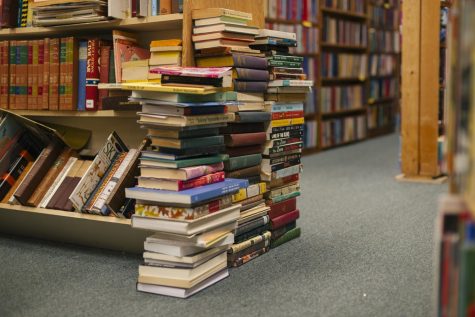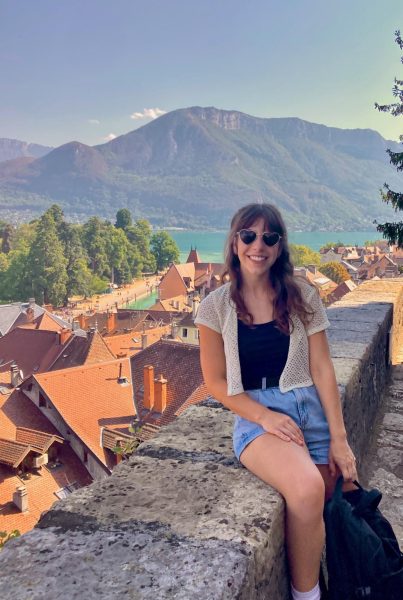Opinion: OSU leads sustainability movement among institutions
May 7, 2018
Bees wrap is the bees knees of food technology.
Oregon State University has been a leader for sustainability practices for years and we are the first campus to structure a sustainable reusable method with to-go containers on campus.
Eco-To-Go containers first popped up at OSU in fall 2015, and the initiative started out as a buy-in system. This means that customers would buy a container for their own use at $7 and receive 20-cent discounts whenever they used them. Before this concept was set in motion, to-go containers were plastic and used in droves. Although this system didn’t first work quite as efficiently as intended, the team pushed for a larger scale approach which became routine by January of last year.
Receiving a silver award for waste management from The National Association of College and University Food Services really put OSU on the front runnings of the sustainability movement.
Chris Anderson, dining operations manager for UHDS and leader of the program, also received a grant from the Oregon Department of Environmental Equality, which helped perpetuate the success of the campus wide food saving technology system that we use today.
UHDS makes the effort to have an accessible program to students all over campus with 16 external drop-off locations around campus, one on every floor of residence buildings, as well as in the kitchens of dining halls.
“I have had a super positive experience with [the containers] it is convenient to eat on campus, store food and take advantage of the dining plan,” Nolan Gunter, a first-year studying computer science and sustainability, said.
Gunter is an Eco Rep for Sackett Hall and was initially drawn to OSU for their sustainability leadership. He loves the use of Eco-To-Go containers because they utilize the social dimension of sustainability and is a great step to environmental health.
“I’d like to see more locations inside popular buildings like the MU or the Library, to give people more opportunities to drop them off,” Gunter said.
Brian Stroup is the associate director of UHDS and the director for operations. Stroup organizes the system’s drop off locations and helps manage the student collection crew for the program.
“We are one of the few and possibly the only campus that has done it this way, that’s gone fully reusable for food to go. It’s uncharted territory,” Stroup said.
The beaver orange containers are used 14 to 15 times, which over the years has saved 1 million containers from going to the landfill. Although this is a great move for the program, there still seems to be a problem with the return rate of these containers.
Around the dining halls of campus, UHDS has been forced to prop up signs stating that inventory was low and that paper containers were to be used in place of the Eco-To-Go’s. The quantity of containers is affected by the return rate from consumers and the quality of the containers returned.
Stroup states that containers that have been left to the elements or contain too much bacterial growth are pulled from circulation, the containers that go missing sometimes show up at resale places like Goodwill or the Arc, or some are just taken home with students.
“We see some students keeping them in their rooms or staff who collect a stack of them and don’t think to take them back until later. It really affects the return flow,” Stroup said.
This program is great in the sense that food waste is limited and reusable containers have been put in place, although rethinking the plastic materials that are involved could make the system more earth friendly.
“Future questions we can explore would be things like, plastic that can break down more quickly in the event they do go in the trash on accident” Stroup said.
A potential future step in the program could be looking at cup usage, Stroup was open to the idea of integrating the use of beeswrap technology.
In the last few years there has been a new invention buzzing around the food tech industry. Beeswrap is made from organic muslin infused with beeswax, jojoba oil and tree resin which makes the fabric airtight, waterproof, flexible and just sticky enough to behave like plastic wrap.
“We are always looking at ways to make our programs more sustainable, and it’s great to work at a place that is excited about trying new things,” Stroup said.
Could beeswrap have a future at OSU? How many Eco-To-Go containers do you have stacking up? OSU is a recognized leader for our innovation and ambition. Isn’t it great to be a beaver?





















































































































